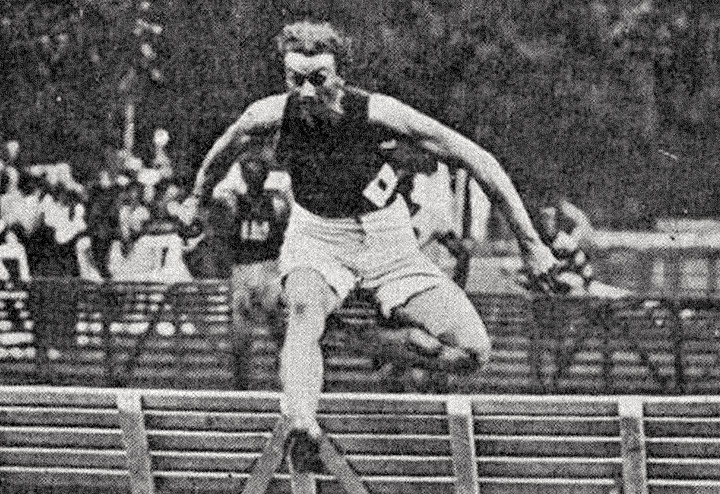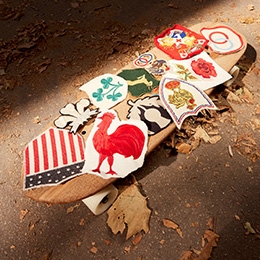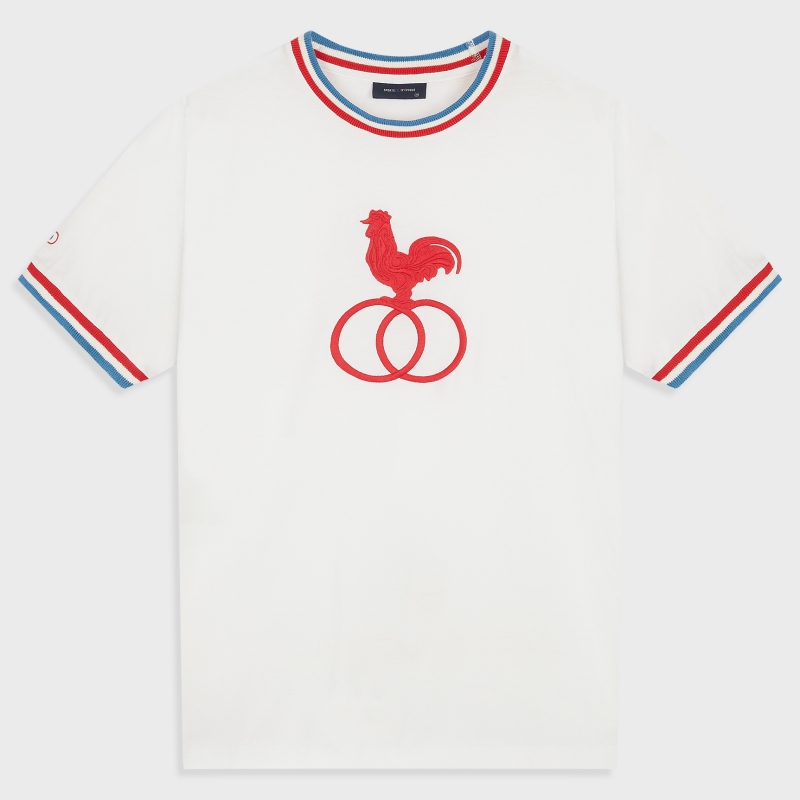Blog - Athletics
SPORTS AND HISTORICAL ANECDOTES,
TO SHINE IN SOCIETY
Athletics
HOW WERE
HURDLE RACES BORN?
While most of the athletics events we know today originated in Greece during Antiquity, hurdle races emerged much later, and we owe them to our British neighbors.
We're in the middle of the 19th century. Across the Channel, it's horse racing that's captivating the crowds. Watching horses leap over various obstacles (hurdles, walls, bushes, rivers, etc.) attracts attention and, importantly, sparks a thought at that time: if horses can do it, why not humans?
That's when Oxford students decided to organize a race with wooden bars serving as hurdles, thus echoing this equine inspiration. Around the 1830s, it was run over a distance of 100 yards (91.44 meters). In 1855, the event found its way into the sports programs of British public schools.
Oxford and Cambridge agreed that it should be run over 120 yards (109.72 meters), crossing 10 hurdles with 15 yards (13.72 meters) of clear space at the beginning and end of the course.
It wasn't until 1888 that Baron Pierre de Coubertin, by introducing the metric system, added the 28 centimeters that would seal the classic distance of this event: the 110-meter hurdles.
Show your passion for athletics and its history through your clothing, thanks to Sports d'Epoque.
ALVIN KRAENZLEIN,
THE "FOSBURY" OF HURDLE JUMPING

Paris. The summer of 1900. A young American athlete from Minneapolis, named Alvin Kraenzlein, is getting ready for the final of the 200-meter hurdles. Almost unknown to everyone in Paris, he quickly became the sensation of these athletics events, easily winning the 60 meters and the 110 meters a few days earlier.
His secret: a new jumping technique he developed at the University of Pennsylvania, where he's studying dentistry. He jumps the hurdles "on the fly," extending his leading leg forward to minimize time loss over the obstacles.
Thanks to this revolutionary technique for the time, he wins the 200-meter hurdles as well as the long jump. Four gold medals that establish him as a legend of athletics, but most importantly as the inventor of the technique adopted by all athletes specializing in hurdle jumping.
GUESS WHERE THE 100-METER SPRINT WAS BORN?
Historically, sprinting is one of the oldest forms of athletics. And with good reason: it dates back to Antiquity. But the 100-meter dash didn't appear immediately.
The Greeks first used the length of a stadium to set up what was then the shortest race in Greek sport.
But it was the British who began to approach the distance as we know it today, initiating in the 19th century races based on the mile, the half-mile, the quarter-mile, the eighth-mile and finally the 110 yards (100.52 meters).
After the first modern-day short sprint races on university campuses in the mid-19th century, again in the UK, with 100-yard (91.44-metre) races, the 100-metre was truly born in Paris in 1891.
In the French capital, the first record time over the metric distance was set by American Luther Cary in 10'75.
NO TIME TO BREATHE!
The marathon world record is currently held by Kenya's Eliud Kipchoge with a time of 2 h 1 min 39 s set on September 16, 2018 at the Berlin Marathon, Germany, average speed 20.81 Km/h!
GUESS THE ATTIRE
OF THE FIRST RUNNERS.
When the first foot races were held in the mid-19th century, the new athletes wore jockey's outfits: large, brightly-colored gaiters and knee-high breeches, white stockings and patent pumps. They used to hold a riding crop in their hand and would whip their thighs to give themselves a boost.
A little later, as in England, Parisian club athletes were given horse names (and jockey outfits): Alcindor, Saint-Blaise, Baudres, Iroquois, Boïard, Djinn, Podas, Okus,... and even Queen Mary. They were organized into stables and wore colors. Bets were taken and races ranged from 60 to 1,700 meters.

SINCE WHEN HAVE WOMEN
BEEN ALLOWED TO RUN MARATHONS?
The Boston Marathon was created in 1897, and women have been allowed to take part since... 1972!
In 1967, the American Katherine Switzer circumvented the ban by running with a male bib.
The organizer tried, unsuccessfully, to snatch her bib from her mid-race, but the very next day she made headlines around the world.
CAN 6 WORLD RECORDS
BE BROKEN IN 1 HOUR?
Yes, they can. On May 25, 1935, Jesse Owens, the famous American athlete, achieved the feat of breaking or equaling 6 athletics world records in... one hour!
This incredible feat was achieved in spite of back pain caused by a bad fall a few days earlier. Another remarkable fact is that Jesse Owens' long jump record stood for almost 25 years!

JOSEPH GUILLEMOT, ONE OF FRANCE'S FIRST
FRENCH ACHIEVEMENTS IN ATHLETICS
It was no mean feat, since he had returned from the First World War gassed and with his right lung atrophied, and was pitted against Paavo Nurmi, the hottest Finnish athlete of the moment, triple gold medalist and nicknamed the Flying Finn.
On the track of the BEERSHOT stadium, with 300m to go, while the Frenchman remained behind throughout the race, he accelerated, caught up with Nurmi, overtook him and crossed the line 20m ahead of him!
He tried to repeat the feat for the 10,000m, but the race had been brought forward and he left the table. Tortured by digestive problems, he's not in his right frame of mind, nor in his right sneakers: he's running in shoes that are too big, because someone stole his before the race. Nevertheless, he wins the silver medal.
A LEGEND BEYOND HUMAN LIMITS
Nicknamed "THE FLYING FINN", Paavo Nurmi, like his co-patriot Hannes Kolehmainen, "put Finland on the world map"! Paavo Nurmi's build was ideal for a long-distance runner: he measured 174 cm for 65 kg. When it came to training, Nurmi was self-taught. He was one of the first top athletes to adopt a systematic approach to training based on three elements: walking, running and calisthenics.
In 1924, in the space of six days, Paavo Nurmi won five gold medals; three individual and two team. Paavo Nurmi's most legendary victories came in the 1500 m and 5000 m, with both finals taking place in less than two hours! The French magazine "Le miroir des sports" wrote of Nurmi: "Paavo Nurmi exceeds human limits".
THE CZECH LOCOMOTIVE!
Nicknamed "The Czech Locomotive", Emil Zátopek broke 18 world records over various distances, becoming the only man to hold 8 different world records simultaneously!
Considered one of the greatest runners of all time, he made his mark following his historic treble in 1952. He successively won the 10,000 metres, the 5,000 metres and the marathon, a distance he ran for the first time, a feat that has never been repeated since.
A revolutionary in his training methods, Zátopek invented split running, now used by the vast majority of top athletes. This national hero was honored by Václav Havel in 1988, who awarded him the Order of the White Lion. He was also inducted into the Athletics Hall of Fame in 2012.
LIVES THAT INSPIRED THE FILM "CHARIOTS OF FIRE"
Harold Abraham became the first European to win a sprint title, holding off American Jakson Sholz and Charlie Paddock. His failure to qualify for the 100 m in Antwerp 4 years earlier was undoubtedly a driving force behind his 1924 feat. He wanted revenge, and trained relentlessly. In fact, he pioneered a professional approach to sports preparation. On July 7, 1924, he surprised everyone by winning the 100m gold medal in 10s, wearing the number 419.
His performance was immortalized in the film The Chariots of Fire, in which his friendship with Harold Abrahams, the other British athlete to medal in 1924, is recounted. Nicknamed "The Flying Scotsman", Eric Liddell was a specialist in short sprints. A fervent Protestant, he withdrew from the 100 m in 1924, as the final in this discipline took place on a Sunday. He therefore concentrated on the 400 m, in which he won gold on July 11, 1924, wearing number 451.
WHO SAID, "STOP RUNNING, YOU MADMAN, GO AND PLAY MARBLES, IT WILL NEVER BRING YOU ANYTHING"?
A legendary athlete, Jean Bouin was no stranger to titles: he was French cross-country champion 4 times in a row from 1909 to 1913 and won the 5-nation cross-country race 3 times between 1911 and 1913! In 1911, he smashed the French 10,000-meter record in 30 minutes 58 seconds. His neck-and-neck finish in 1912 with Finland's Hannes Kolehmainen remains a highlight of sporting history.
Born in Marseille in 1888, Bouin had sport in his blood. As a youngster, he was so energetic that one day his teacher Joseph Pagnol (Marcel's father) reprimanded him: "Stop running, you great madman, go and play marbles, it will never bring you anything". When you know the background of this sporting hero, it's enough to make you smile!
Gifted with exceptional physical qualities, the Marseillais was an intelligent, structured sportsman who self-imposed a very strict lifestyle and carried out intensive, innovative training for his time. The record set on July 6, 1913 augured a bright future for Jean Bouin, who was determined to take revenge on the Finnish Hannes Kolehmainen. Alas, war was to rob him of his life, and he fell on the field of honor on September 29, 1914. Bouin was only 26 years old.

















